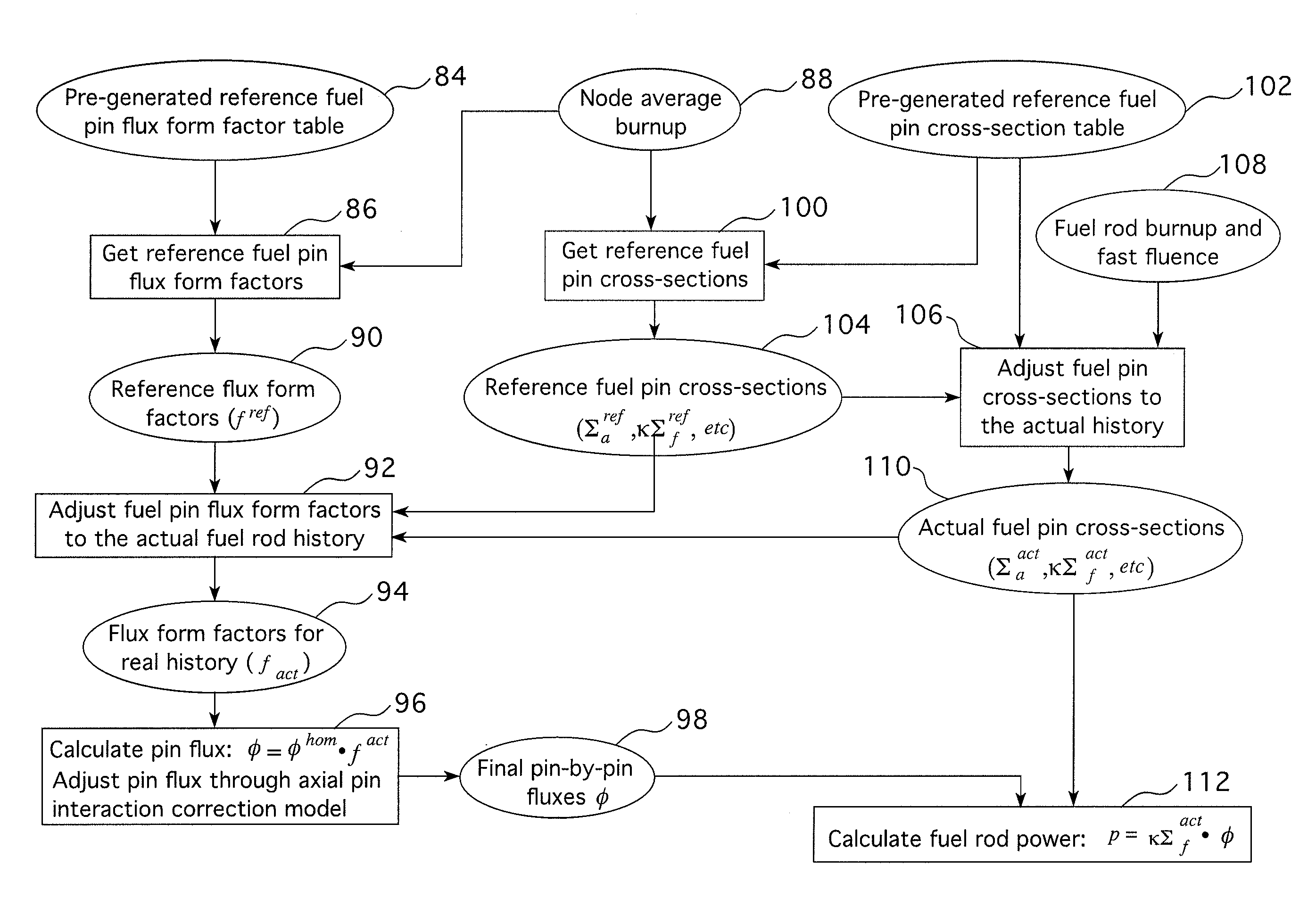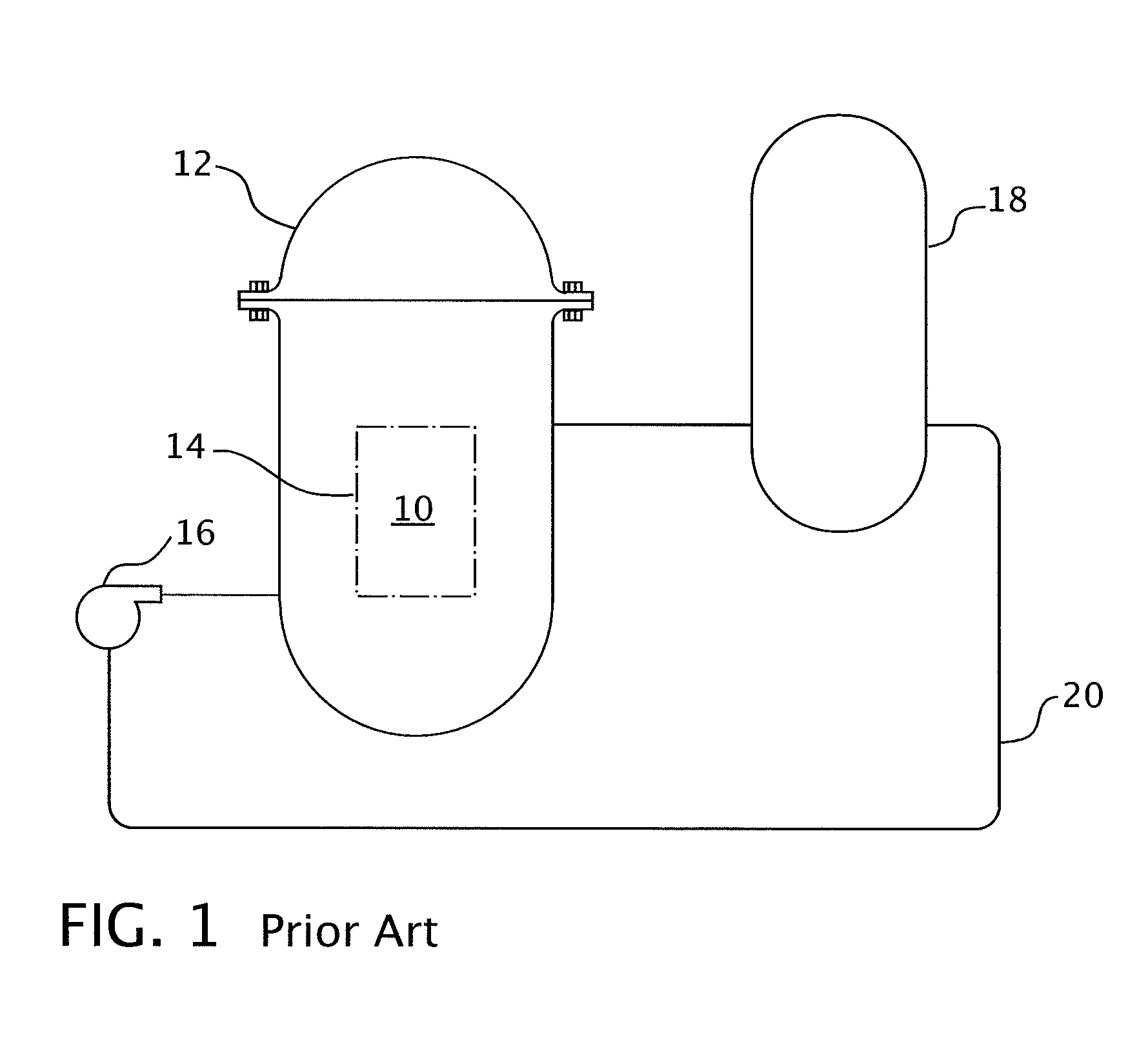Methodology for modeling the fuel rod power distribution within a nuclear reactor core
a technology of nuclear reactor and power distribution, which is applied in the direction of nuclear elements, instruments, greenhouse gas reduction, etc., can solve the problems of cladding failure, insufficient accuracy of power distribution estimates, and affecting the insertion capability of control rods, etc., and achieve the effect of fast fluence correction
- Summary
- Abstract
- Description
- Claims
- Application Information
AI Technical Summary
Benefits of technology
Problems solved by technology
Method used
Image
Examples
Embodiment Construction
[0028]In most nuclear core design codes, such as ANC, to obtain the pin power distribution of each fuel rod, the fuel pin power form factors are applied to a homogeneous pin power profile over a node to get a pin by pin heterogeneous power distribution for the group of fuel assemblies within the node. It should be appreciated that “fuel rod” and “fuel pin” are used interchangeably in this description. As in many advanced nuclear core design codes, ANC uses energy group dependent form factors. That is, a given set of form factors corresponds to a number of fuel rods within a given energy range. The fuel rod (pin) power of each energy group (g) at (x,y) is expressed as:
Pg(x,y)=κΣf,ghom(x,y)·φghom(x,y)·fgp(x,y)=Pghom(x,y)·fgP(x,y) (1)
Here (x, y) is the homogeneous pin power, which is obtained from the homogeneous pin-by-pin fluxes and kappa-fissions (ΛΣf, i.e. energy release rate from fission). The homogeneous pin fluxes φghom(x, y) are derived by solving two energy group diffusion eq...
PUM
 Login to View More
Login to View More Abstract
Description
Claims
Application Information
 Login to View More
Login to View More - R&D
- Intellectual Property
- Life Sciences
- Materials
- Tech Scout
- Unparalleled Data Quality
- Higher Quality Content
- 60% Fewer Hallucinations
Browse by: Latest US Patents, China's latest patents, Technical Efficacy Thesaurus, Application Domain, Technology Topic, Popular Technical Reports.
© 2025 PatSnap. All rights reserved.Legal|Privacy policy|Modern Slavery Act Transparency Statement|Sitemap|About US| Contact US: help@patsnap.com



